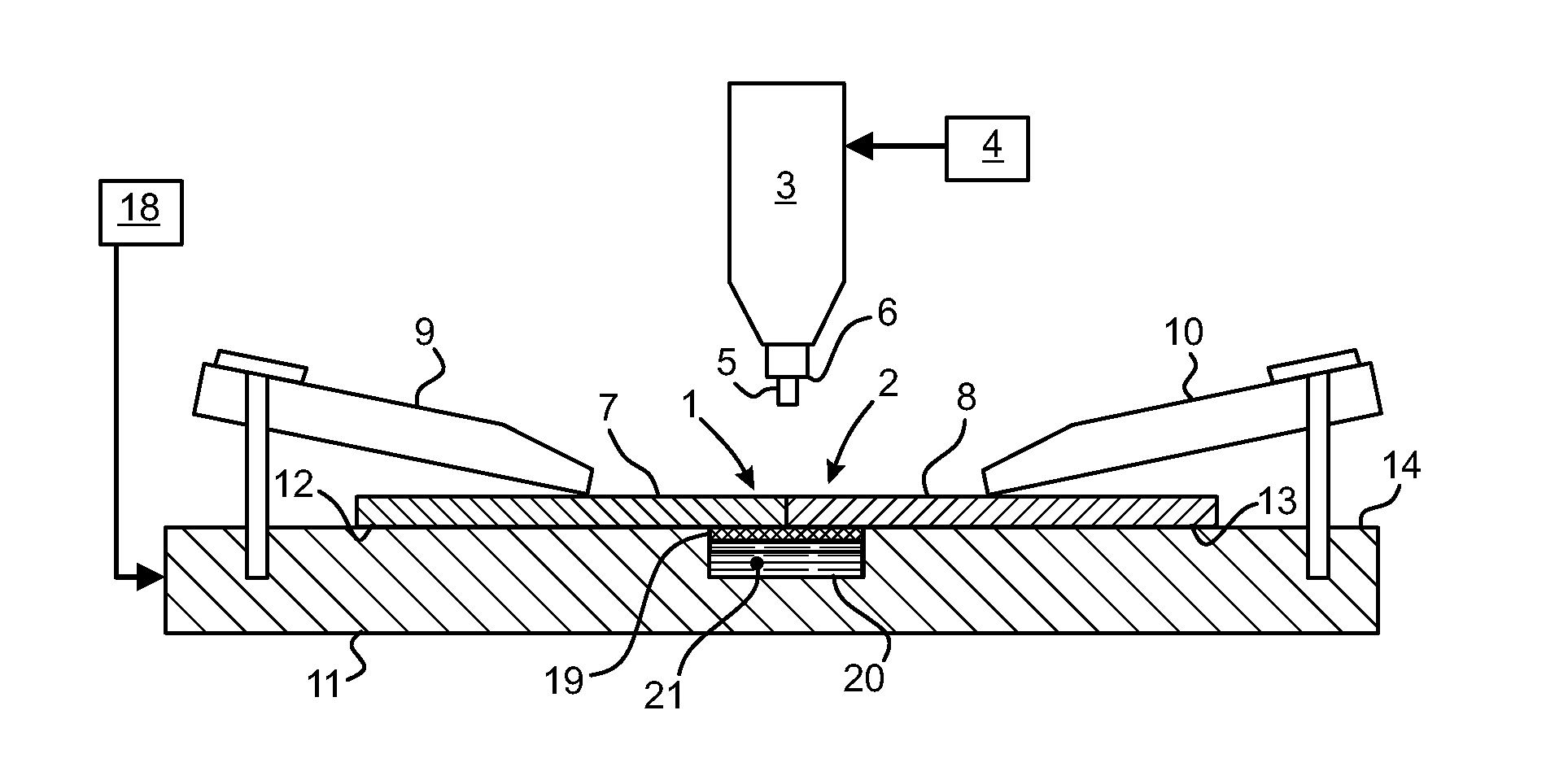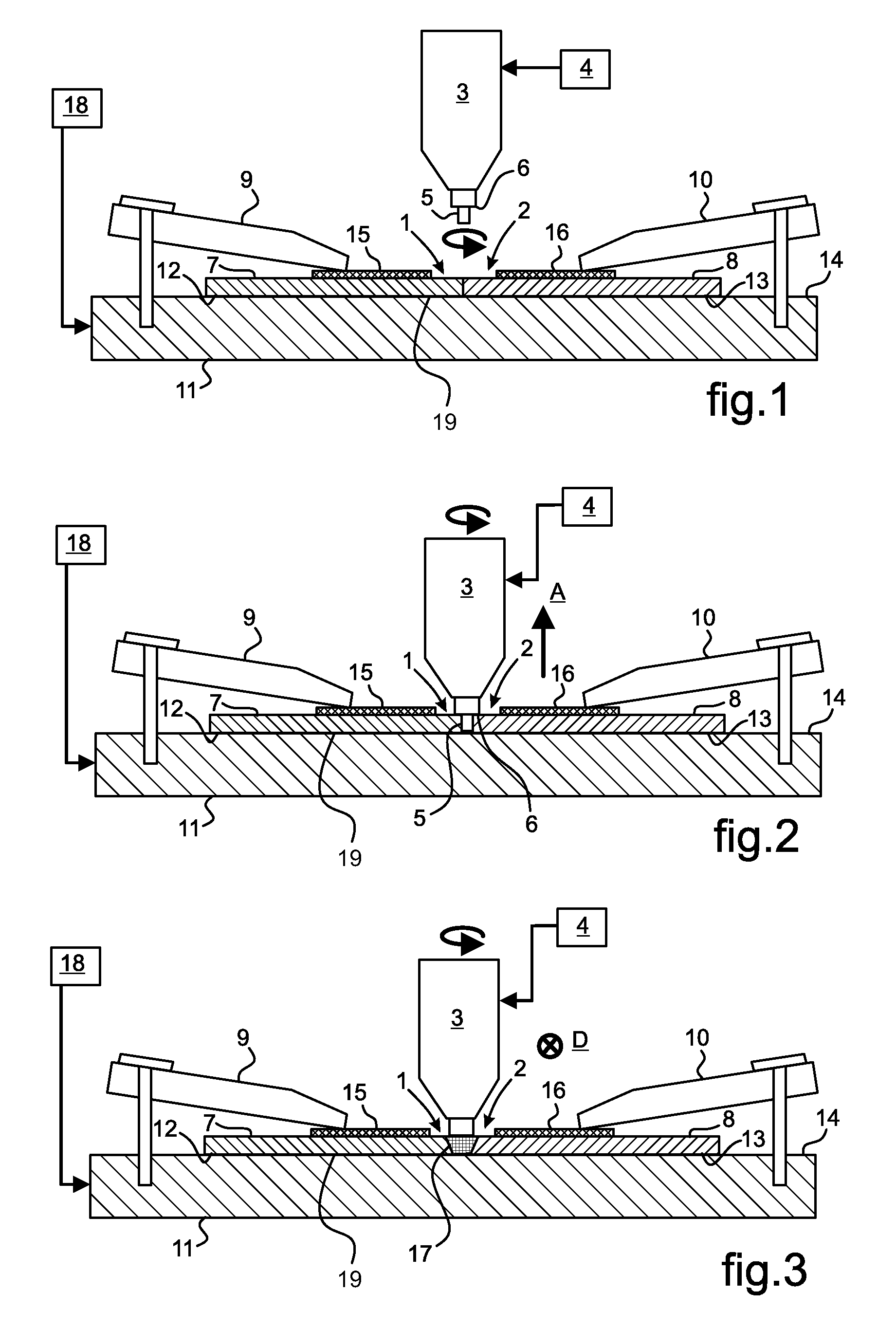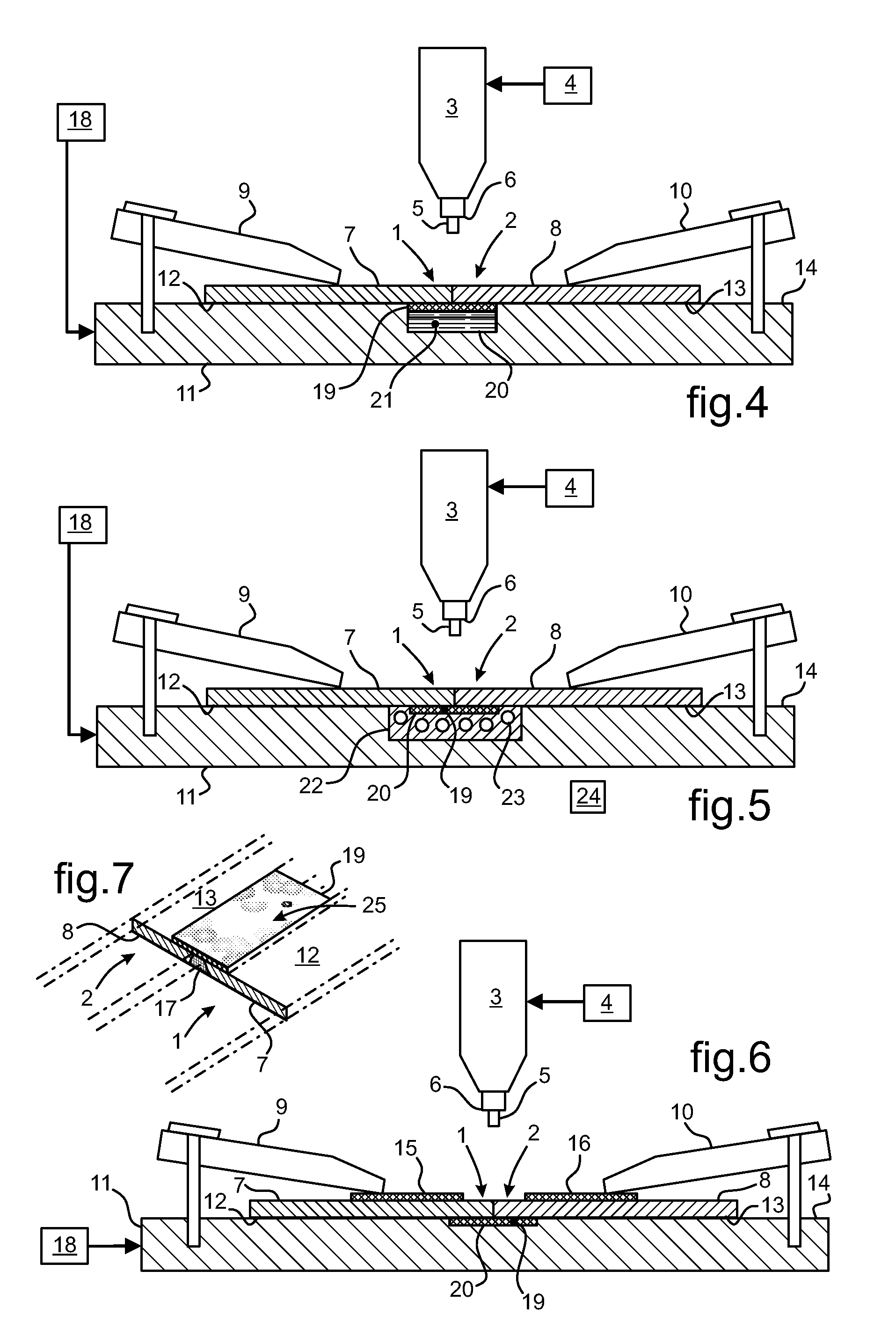Method of assembling metal parts by friction welding, with the welding temperature being controlled using thermally conductive elements
a technology of friction welding and thermal conductivity, which is applied in the field of friction welding, can solve the problems of friction welding causing localized heat generation very quickly, poor thermal conductivity, and difficult to solve, and achieves the effects of improving the ease with which the temperature regulation is sought, improving the degree of automation, and reducing the difficulty of friction welding
- Summary
- Abstract
- Description
- Claims
- Application Information
AI Technical Summary
Benefits of technology
Problems solved by technology
Method used
Image
Examples
Embodiment Construction
[0059]In FIGS. 1 to 3, a machine is organized to assemble together two plane parts 1 and 2 that are of small thickness, being about one millimeter thick. Assembly is performed more particularly using the known friction-welding technique. The machine comprises a chuck 3 that is driven in rotation by first motor means 4 and that carries a welding pin 5. The chuck 3 has a shoulder 6 that acts as a depth gauge, the welding operation being controlled in force as a result of the friction induced by the shoulder 6 rubbing against the top faces 7 and 8 of the parts 1 and 2 for assembling together. The machine is fitted with a set of clamps 9, 10 for pressing the parts 1 and 2 against an anvil 11. More particularly, the clamps 9 and 10 bear against the top faces 7 and 8 of each of the parts 1 and 2, which parts bear in reaction via their bottom faces 12 and 13 against a support face 14 of the anvil 11. The parts 1 and 2 are held pressed against the anvil 11 while being placed adjacent to eac...
PUM
| Property | Measurement | Unit |
|---|---|---|
| width | aaaaa | aaaaa |
| length | aaaaa | aaaaa |
| thickness | aaaaa | aaaaa |
Abstract
Description
Claims
Application Information
 Login to View More
Login to View More - R&D
- Intellectual Property
- Life Sciences
- Materials
- Tech Scout
- Unparalleled Data Quality
- Higher Quality Content
- 60% Fewer Hallucinations
Browse by: Latest US Patents, China's latest patents, Technical Efficacy Thesaurus, Application Domain, Technology Topic, Popular Technical Reports.
© 2025 PatSnap. All rights reserved.Legal|Privacy policy|Modern Slavery Act Transparency Statement|Sitemap|About US| Contact US: help@patsnap.com



